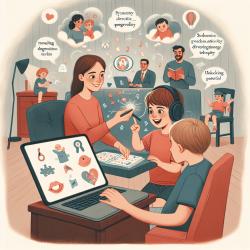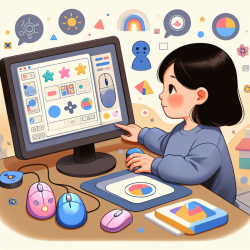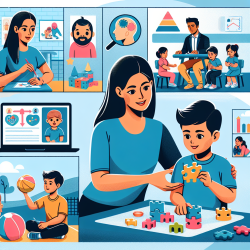Introduction
In the quest to improve communication skills in children with Autism Spectrum Disorder (ASD), understanding the nuances of multisensory processing is crucial. A recent study titled Temporal Synchrony Detection and Associations with Language in Young Children with ASD offers valuable insights into how temporal synchrony can influence language development in children with ASD. This blog post explores how practitioners can leverage these findings to enhance therapeutic outcomes.
The Power of Temporal Synchrony
Temporal synchrony refers to the ability to detect and integrate simultaneous auditory and visual stimuli. For typically developing children, this ability plays a significant role in language acquisition. The study reveals that children with ASD can also detect audio-visual synchrony, especially when it involves non-social stimuli, such as objects and their corresponding sounds. This finding is pivotal as it suggests that enhancing multisensory processing could be a pathway to improving language skills in children with ASD.
Key Findings and Implications
The study found that children with autism showed a preference for synchrony when presented with video recordings of linguistic stimuli paired with the movement of related toys, absent of facial cues. This preference was positively correlated with receptive language skills. The implications are profound:
- Enhanced Attention: Temporal synchrony can direct attention to communicative events, providing a foundation for language development.
- Improved Language Skills: Children who spent more time attending to synchronous conditions demonstrated better receptive language abilities.
- Potential for Novel Interventions: The study suggests that object manipulations might enhance multisensory processing in linguistic contexts, offering a new avenue for therapeutic interventions.
Practical Applications for Practitioners
For practitioners, incorporating the concept of temporal synchrony into therapy sessions can be transformative. Here are some strategies to consider:
- Use of Synchronized Stimuli: Integrate synchronized auditory and visual stimuli into therapy sessions. For example, pairing the movement of toys with verbal labels can help direct attention and enhance language learning.
- Focus on Non-Social Stimuli: Given the challenges children with ASD face with social stimuli, using non-social stimuli can be an effective starting point.
- Monitor and Adapt: Observe how children respond to synchronized stimuli and adjust the complexity of the stimuli based on their individual needs and progress.
Encouraging Further Research
While the findings are promising, further research is needed to explore the long-term impact of temporal synchrony on language development in children with ASD. Practitioners are encouraged to contribute to this growing body of research by documenting their observations and outcomes when applying these strategies in practice.
Conclusion
The study on temporal synchrony offers a hopeful perspective for enhancing language development in children with ASD. By harnessing the power of synchronized stimuli, practitioners can create more effective interventions that cater to the unique needs of each child. As we continue to explore and understand the complexities of autism, such research provides a beacon of hope for creating better outcomes for children.
To read the original research paper, please follow this link: Temporal Synchrony Detection and Associations with Language in Young Children with ASD.










